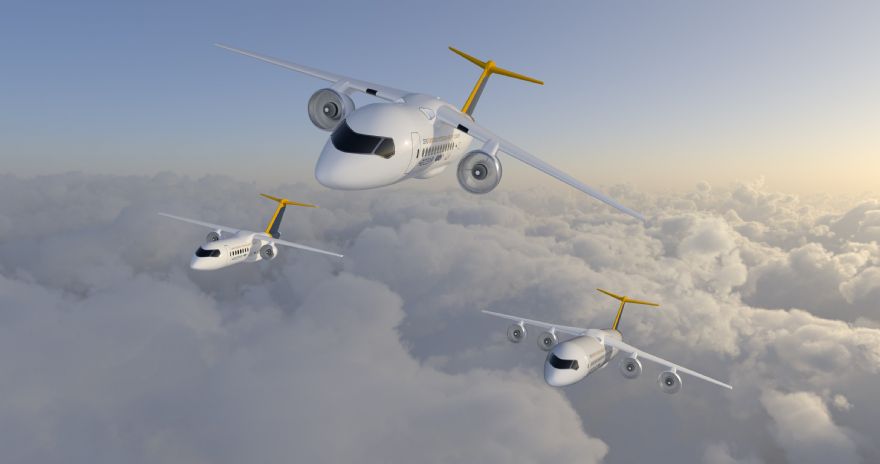
The H2GEAR programme has passed a major milestone by completing its first round of ‘system level trade studies’, which focused on propulsion system architecture and subsystem technology selection for hypothetical 19-, 48- and 96-passenger aircraft.
Work to date shows that
GKN Aerospace’s developments in the fuel-cell system integration, combined with hyper-conducting power network and motor drive systems, will enable hydrogen-electric propulsion to be scaled up more quickly than was originally thought.
Max Brown, GKN Aerospace’s vice president of technology, said: “Our initial view was that the introduction of hydrogen electric propulsion to 19-passenger aircraft would be easier than for large aircraft. However, development of the hyper-conducting network and cryogenic motor technology has opened our eyes to the possibility of efficiently scaling the technology to 96 passengers — and potentially beyond.”
The hyper-conducting systems proposed by GKN Aerospace use the onboard liquid hydrogen as a heat sink, cooling the electrical conductors to temperatures less than -200°C to dramatically reduce their electrical resistivity.
This reduction in resistivity facilitates electrical power distribution at low voltage, lower-mass conducting cables, and electric motors that are set to achieve over 99% efficiency. Unlike superconducting systems, which exhibit zero electrical resistance, a hyper-conducting system would use more conventional conductor materials and is deliverable sooner, offering ‘a greater overall impact on global emissions in the foreseeable future’.
The H2GEAR programme was launched in 2020 to develop scalable hydrogen electric propulsion technology for a new generation of ‘sustainable aircraft’. The proposed system generates electrical power from hydrogen using fuel cells. This electrical power is distributed to electric motors which are sized to drive low pressure-ratio ducted fans.
This approach eliminates CO
2 and NOx emissions, provides opportunities for contrails mitigation, and is also expected to offer noise reduction opportunities relative to conventional propulsion systems. Integrated ground-based demonstration of the H2GEAR technologies is scheduled for 2025; entry-into-service of the first hyper-conducting hydrogen-powered aircraft could be as early as 2035.
Mr Brown added: “This is a truly groundbreaking programme, bringing together some of the world’s top experts to develop technology that will really move the dial on global emissions. We are on track and the initial studies have been every bit as successful as we hoped.”